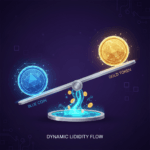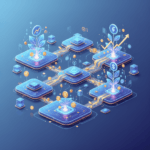
Best ways to brew coffee in 2023
Welcome, coffee lovers! In this in-depth guide, we’ll take you on a journey to discover the secrets of brewing the perfect cup of coffee at home. We’ll explore various brewing methods, share valuable tips, and provide step-by-step instructions to help you elevate your coffee-making skills. So, let’s dive in and transform your daily coffee routine!
1. Choosing the Right Coffee Beans
The foundation of a great cup of coffee lies in the beans you choose. Let’s explore the factors to consider when selecting the perfect coffee beans for your home brewing adventure.
1.1. Arabica vs. Robusta
First, you need to decide between Arabica and Robusta beans. Arabica beans are known for their delicate and nuanced flavors, while Robusta beans offer a bolder, stronger taste with higher caffeine content. The choice ultimately depends on your personal preferences and the type of coffee you enjoy.
1.2. Single-Origin vs. Blends
Single-origin beans come from one specific region, offering distinct flavors influenced by the local terroir. Blends, on the other hand, are a mix of beans from different regions, aiming for a balanced flavor profile. Experiment with both to find your perfect match.
1.3. Roast Level
Roast levels range from light to dark, affecting the flavor, aroma, and body of the coffee. Light roasts exhibit brighter acidity and more nuanced flavors, while dark roasts provide a fuller body and bold, smoky notes. Medium roasts strike a balance between the two. Choose a roast level that suits your palate.

Get a VPS from as low as $11/year! WOW!
2. Grinding Your Coffee Beans
Grinding your coffee beans just before brewing ensures maximum freshness and flavor. Let’s explore the importance of grind size and consistency, as well as how to choose the right grinder for your needs.
2.1. Grind Size and Consistency
The grind size and consistency directly impact the extraction of flavors from your coffee beans. A fine grind is suitable for espresso, while a coarser grind is needed for methods like French press and cold brew. Experiment with different grind sizes to find what works best for your brewing method and taste preferences.
2.2. Choosing a Grinder
Investing in a good-quality grinder is essential for optimal coffee brewing. There are two types of grinders: blade and burr. Blade grinders chop the beans unevenly, resulting in inconsistent grind sizes. Burr grinders, on the other hand, crush the beans between two rotating burrs, providing a more uniform grind. Opt for a burr grinder for the best results.
3. Brewing Your Coffee
Now that you’ve chosen your beans and ground them to the appropriate size, it’s time to brew! We’ll explore four popular home brewing methods: pour-over, French press, Aeropress, and espresso.
3.1. Pour-Over
Pour-over brewing involves pouring hot water over ground coffee in a conical filter, allowing the water to pass through the coffee grounds and into a vessel below. This method offers precise control over brewing variables and produces a clean, bright cup of coffee.
Step-by-Step Guide:
- Pre-wet the filter in the pour-over cone to remove any paper taste and warm up the cone. Discard the rinse water from the vessel.
- Measure your coffee grounds (typically, a 1:15 to 1:17 coffee-to-water ratio, e.g., 20g of coffee to 300-340g of water) and add them to the filter, leveling the surface.
- Heat your water to around 195-205°F (90-96°C).
- Begin pouring the hot water slowly over the coffee grounds in a spiral pattern, starting from the center and moving outwards. Pour just enough water to saturate the grounds, and let them “bloom” for about 30 seconds. This allows the coffee to release trapped gases, leading to better extraction.
- Continue pouring the water in a slow, steady stream, maintaining a constant water level in the cone until you reach the desired coffee-to-water ratio.
- Allow the coffee to finish dripping through the filter, remove the cone, and enjoy your freshly brewed pour-over coffee.
3.2. French Press
The French press, or press pot, is a popular immersion brewing method that produces a rich, full-bodied cup of coffee. It consists of a cylindrical glass or stainless steel container and a plunger with a metal mesh filter.
Step-by-Step Guide:
- Measure your coffee grounds (typically, a 1:15 coffee-to-water ratio, e.g., 30g of coffee to 450g of water) and add them to the French press.
- Heat your water to around 195-205°F (90-96°C) and pour it over the coffee grounds, saturating them evenly.
- Stir the mixture gently with a wooden or plastic spoon to ensure proper extraction.
- Place the lid on the French press with the plunger pulled up and let the coffee steep for 4 minutes.
- Slowly press the plunger down to separate the coffee grounds from the liquid.
- Pour your freshly brewed French press coffee into a cup and enjoy!
3.3. Aeropress
The Aeropress is a compact, portable brewing device that uses air pressure to force water through the coffee grounds, producing a smooth, clean, and flavorful cup of coffee. It is suitable for both regular and espresso-style coffee.
Step-by-Step Guide:
- Measure your coffee grounds (typically, a 1:15 coffee-to-water ratio, e.g., 17g of coffee to 255g of water) and add them to the Aeropress chamber.
- Heat your water to around 175-185°F (80-85°C) and pour it over the coffee grounds, saturating them evenly.
- Stir the mixture for 10-15 seconds to ensure proper extraction.
- Place a pre-wetted paper filter in the Aeropress cap and attach it to the chamber.
- Flip the Aeropress onto your coffee mug or vessel and press down on the plunger with steady pressure. The brewing process should take around 30 seconds.
- Remove the Aeropress, dilute the concentrated coffee with hot water if desired, and enjoy your freshly brewed Aeropress coffee!
3.4. Espresso
Espresso is a concentrated coffee beverage brewed by forcing hot water through finely ground coffee under high pressure. While traditionally made with specialized espresso machines, there are manual and semi-automatic home espresso makers available for enthusiasts looking to recreate this classic beverage at home.
Step-by-Step Guide:
- Measure and finely grind your coffee beans (typically, 18-20g of coffee for a double shot).
- Distribute the coffee grounds evenly in the portafilter and tamp them down with moderate pressure to create a compact, even coffee bed. The correct tamping pressure is crucial for a balanced extraction.
- Attach the portafilter to your espresso machine or manual espresso maker.
- Begin the extraction process, aiming for a total brew time of 25-30 seconds. The ideal espresso shot should yield about 2 ounces (60ml) of liquid, including the rich, golden crema on top.
- Adjust your grind size, tamping pressure, or brewing time as needed to achieve the desired taste and consistency.
- Enjoy your freshly brewed espresso, or use it as a base for other coffee beverages like cappuccinos, lattes, and more!
4. Mastering Coffee Brewing Variables
To achieve the perfect cup of coffee, it’s essential to understand and control various brewing variables. Let’s explore some key factors that influence the taste and quality of your coffee.
4.1. Coffee-to-Water Ratio
The coffee-to-water ratio is the amount of coffee grounds used in relation to the volume of water. This ratio influences the strength and flavor of your coffee. As a general rule, a ratio of 1:15 to 1:17 (coffee to water) is recommended. However, personal preferences and brewing methods may require adjustments to this ratio.
4.2. Water Quality and Temperature
Since water makes up the majority of your coffee, its quality significantly impacts the final taste. Use filtered water to ensure a clean, fresh flavor. The ideal water temperature for most brewing methods is between 195-205°F (90-96°C). Using water that is too hot or too cold can result in over-extraction or under-extraction, affecting the taste of your coffee.
4.3. Brewing Time
Brewing time is the duration that water is in contact with the coffee grounds. Different brewing methods require varying brewing times to achieve optimal extraction. Pay close attention to the recommended brewing times for each method and adjust as needed to fine-tune the taste of your coffee.
4.4. Consistency and Adjustments
As you experiment with different brewing methods and variables, remember that consistency is key. Take note of the factors that produce the best results for you, and replicate them for future brewing sessions. Don’t be afraid to make adjustments and fine-tune your process to achieve your perfect cup of coffee.
Conclusion
Read more about brewing coffee at NCAUSA Mastering the art of home coffee brewing is a rewarding journey that can transform your daily coffee experience. By understanding the nuances of coffee selection, grinding, brewing methods, and key brewing variables, you can unlock the full potential of your coffee beans and create a truly exceptional cup of coffee. Remember to be patient, consistent, and open to experimentation as you hone your skills and uncover the secrets of the perfect home-brewed coffee. Happy brewing!






